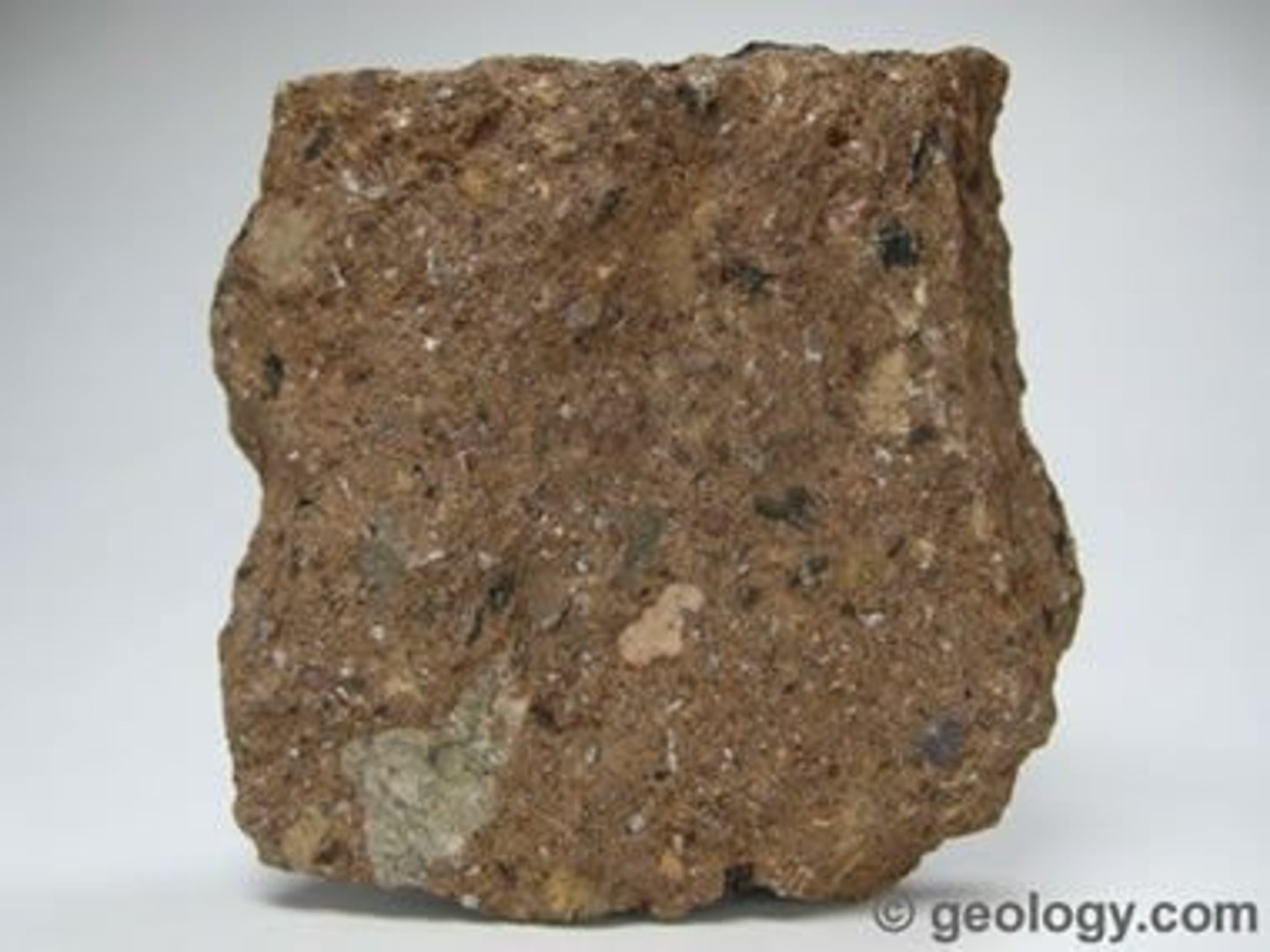Igneous Rock identification
1/11
There's no tags or description
Looks like no tags are added yet.
Name | Mastery | Learn | Test | Matching | Spaced |
|---|
No study sessions yet.
12 Terms
Andesite
a dark, fine-grained, extrusive, brown or grayish igneous rock that is intermediate in composition between rhyolite and basalt.
contains:
1)plagioclase
2)biotite
3)pyroxenes
4)amphiboles
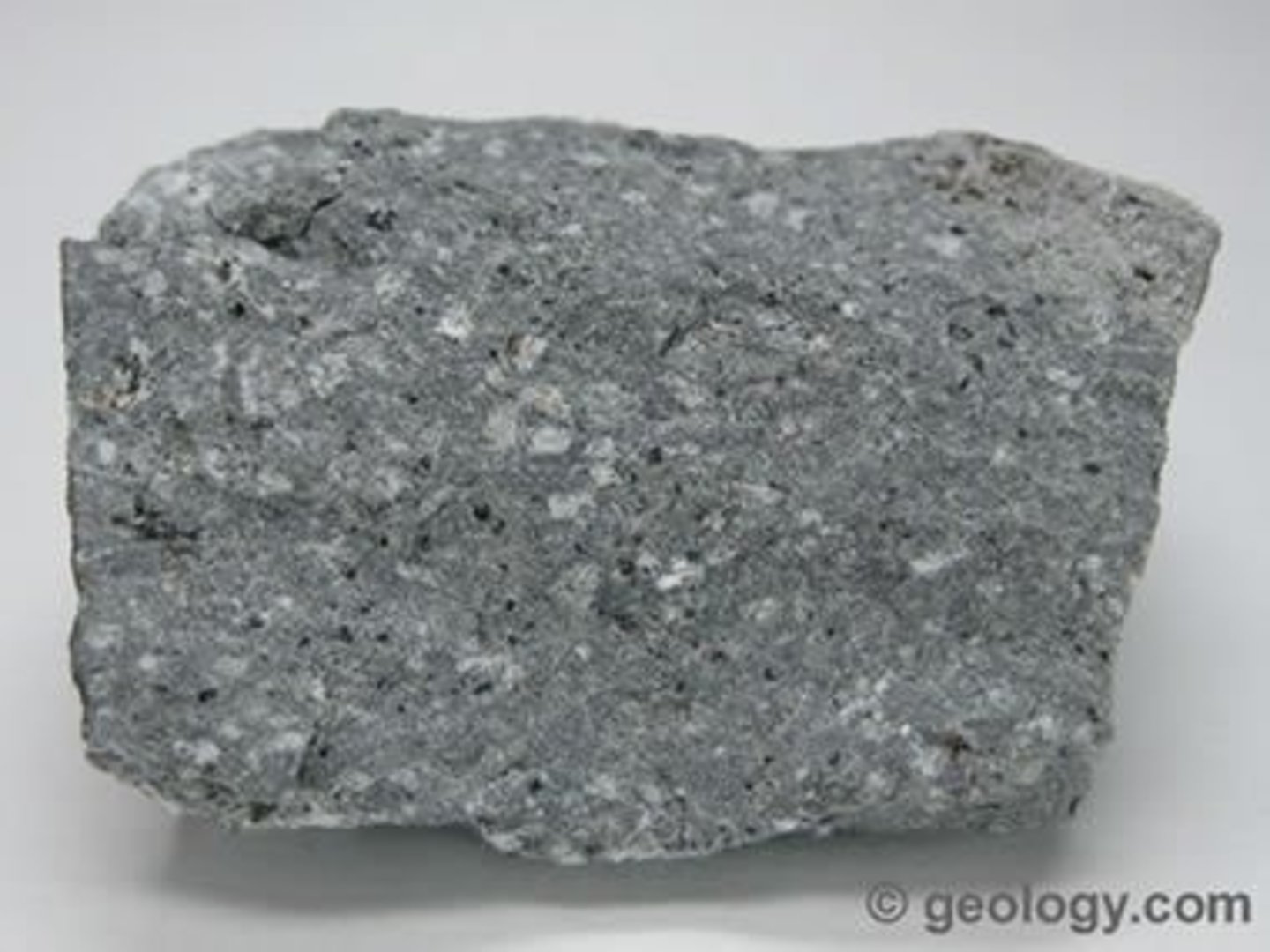
basalt
dark-colored, fine-grained, igneous rock composed mainly of plagioclase and pyroxene minerals. It most commonly forms as an extrusive rock. Underlies more of Earth's surface than any other rock type.
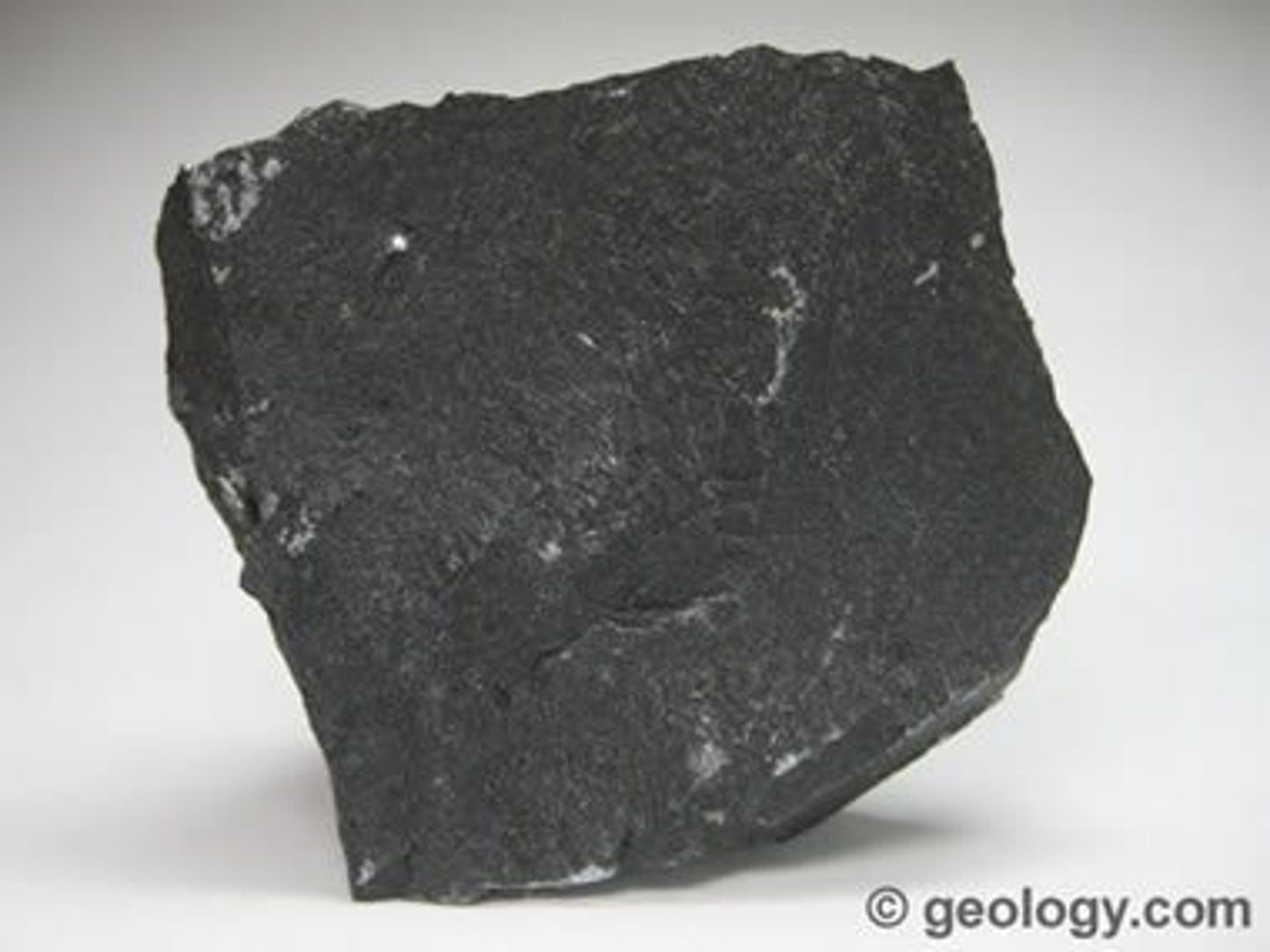
Gabbro
coarse-grained, dark-colored, intrusive igneous rock. It is usually black or dark green in color and composed mainly of the minerals plagioclase and augite. It is the most abundant rock in the deep oceanic crust.
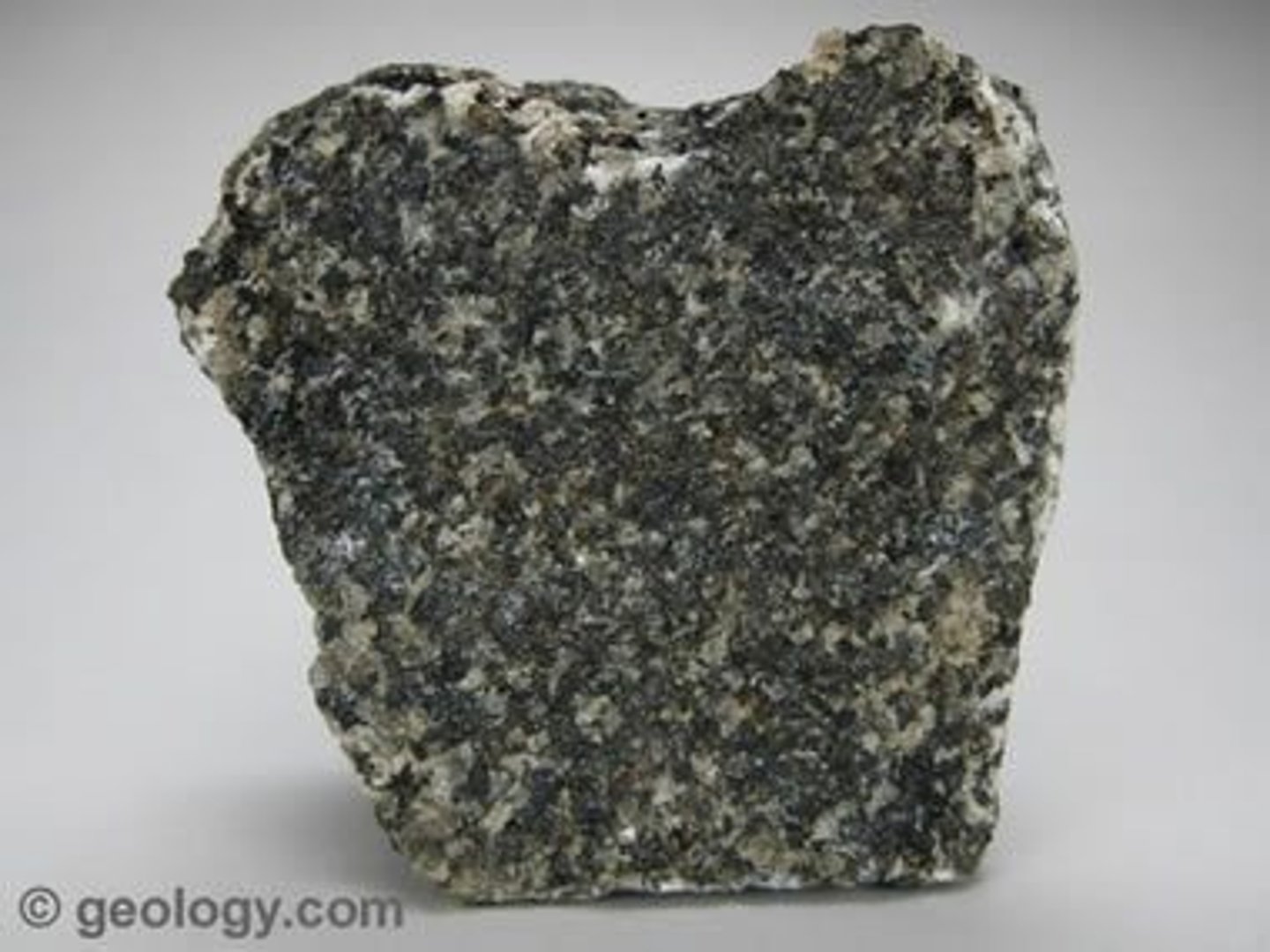
Granite
light-colored igneous rock with grains large enough to be visible with the unaided eye. It forms from the slow crystallization of magma below Earth's surface. Granite is composed mainly of quartz and feldspar with minor amounts of mica, amphiboles, and other minerals.
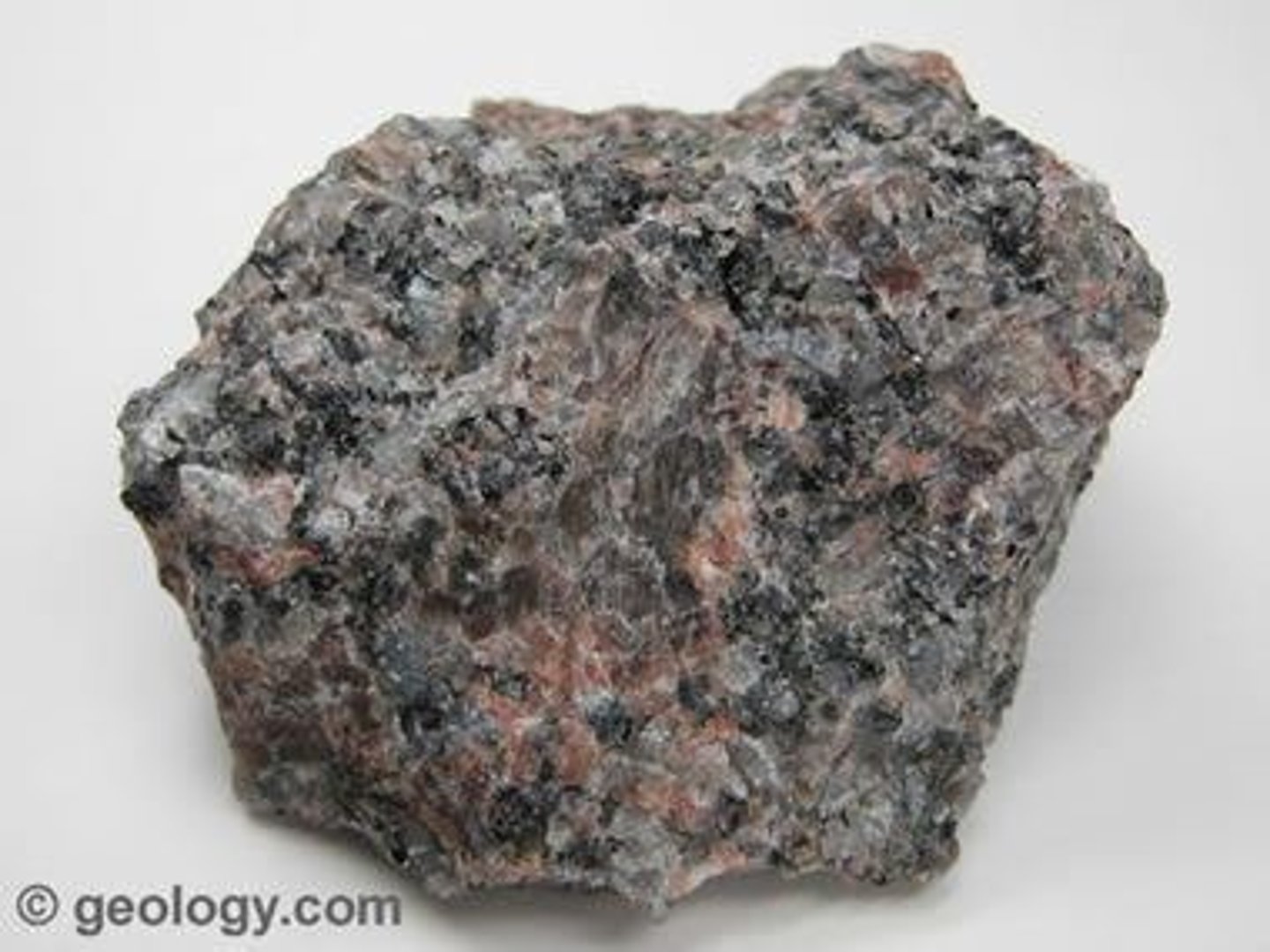
Obsidian
igneous rock that forms when molten rock material cools so rapidly that atoms are unable to arrange themselves into a crystalline structure. It is an amorphous material known as a "mineraloid." The result is a volcanic glass with a smooth uniform texture that breaks with a conchoidal fracture
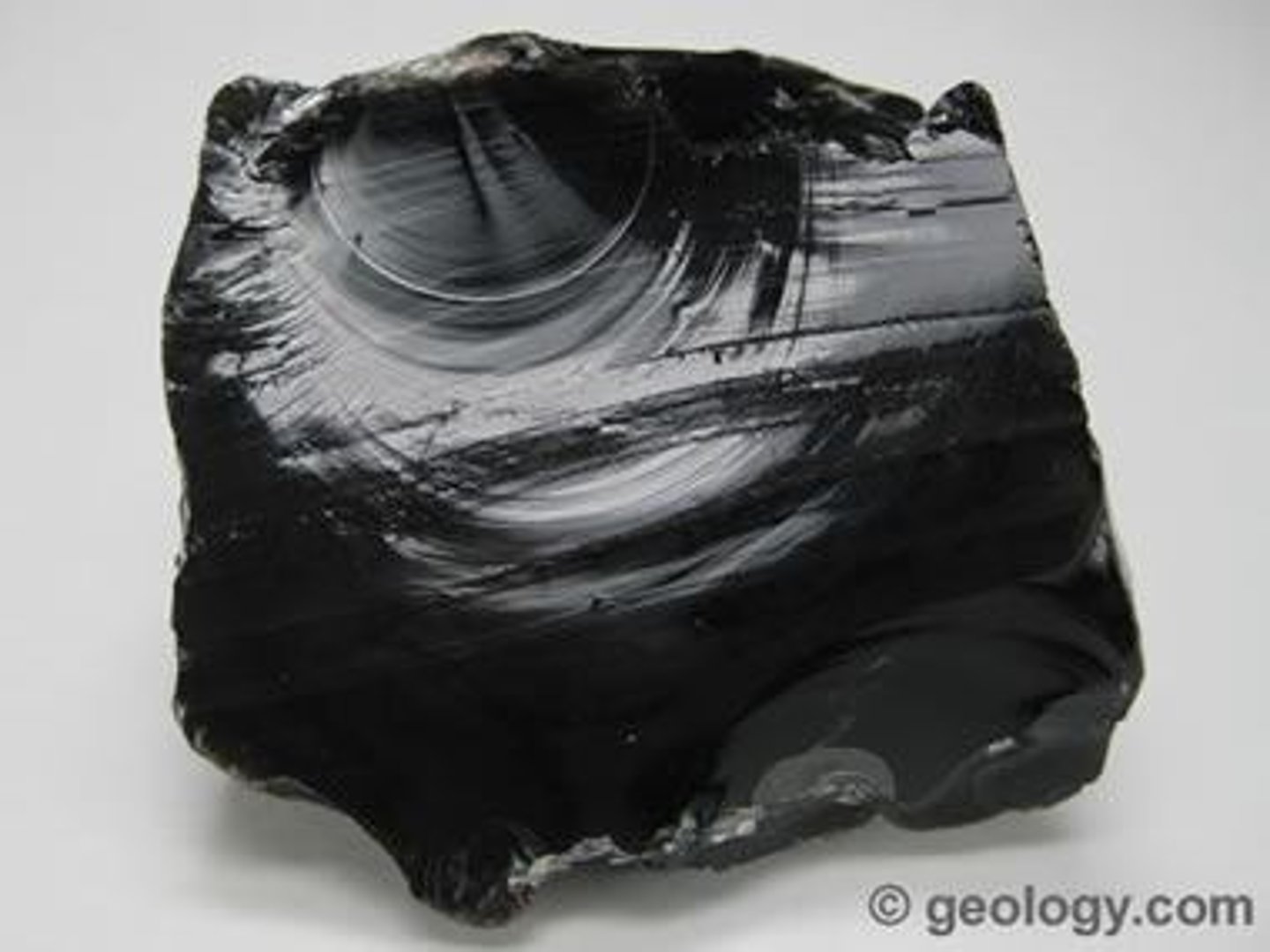
Pegmatite
extreme igneous rocks that form during the final stage of a magma’s crystallization. They are extreme because they contain exceptionally large crystals and they sometimes contain minerals that are rarely found in other types of rocks
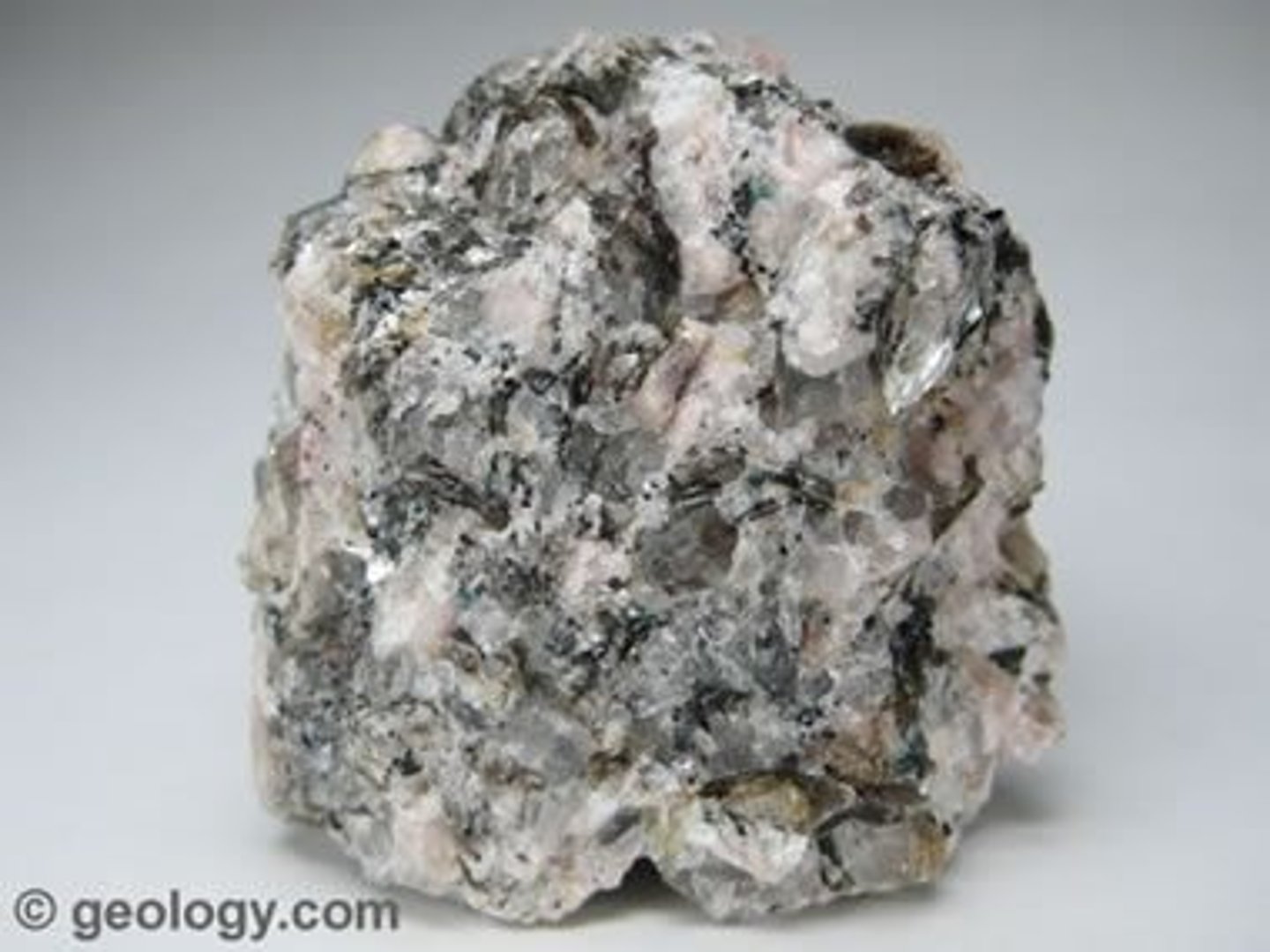
Peridotite
Generic name used for coarse-grained, dark-colored, ultramafic igneous rocks. Peridotites usually contain olivine as their primary mineral, frequently with other mafic minerals such as pyroxenes and amphiboles. Their silica content is low compared to other igneous rocks, and they contain very little quartz and feldspar
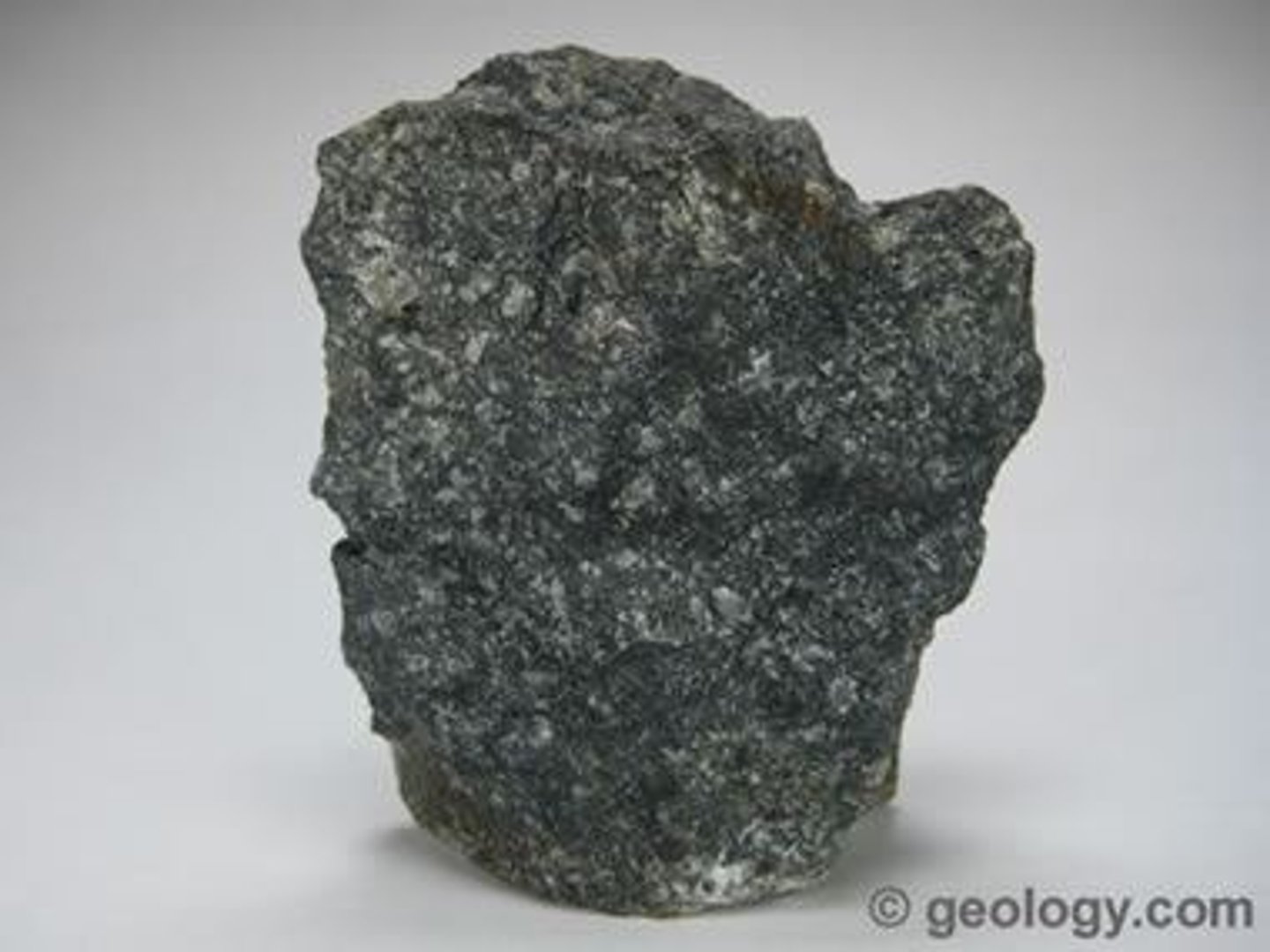
Pumice
light-colored, extremely porous igneous rock that forms during explosive volcanic eruptions.
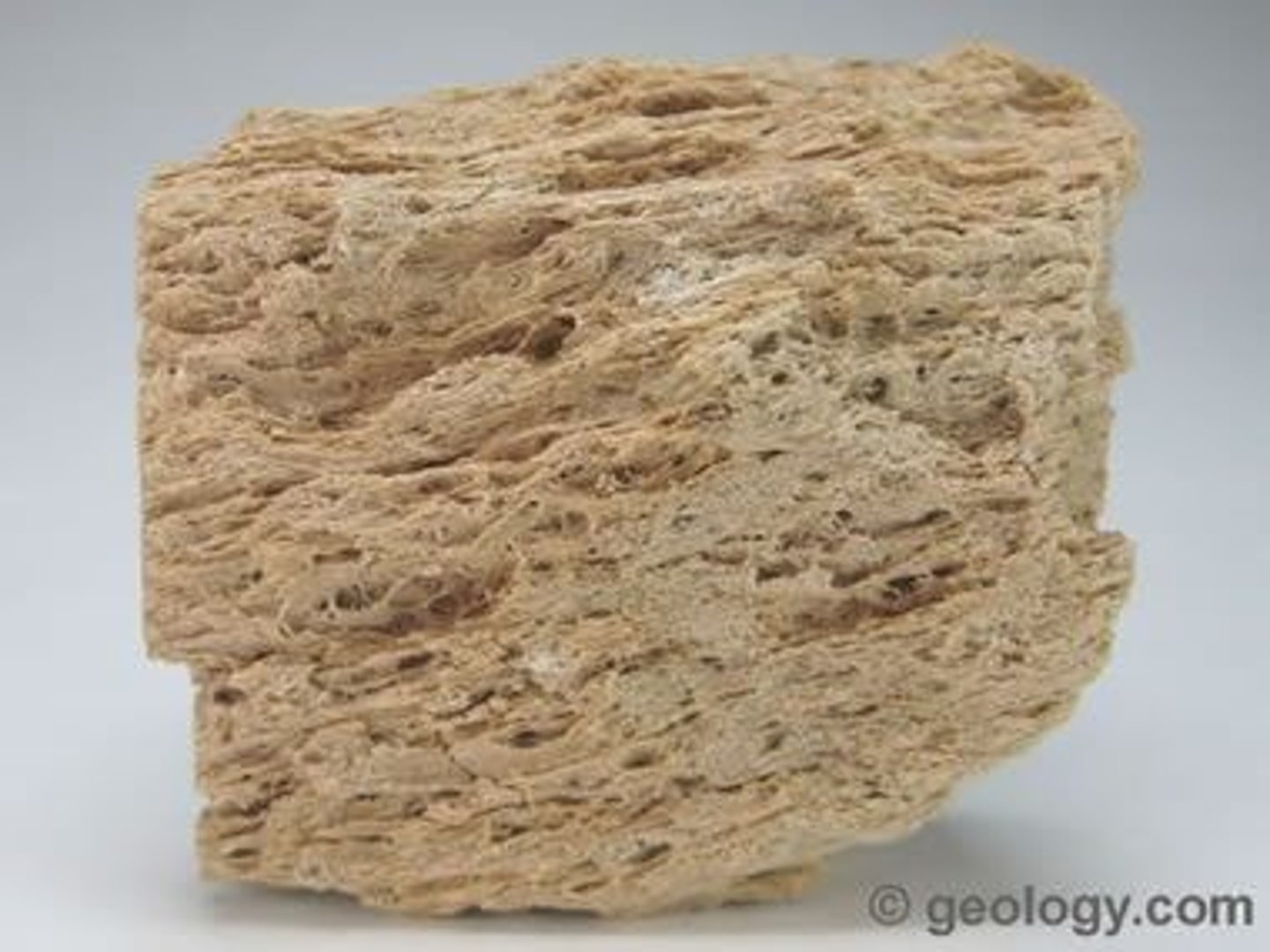
Diorite
Group of coarse-grained igneous rocks with a composition between that of granite and basalt. It usually occurs as large intrusions, dikes, and sills within continental crust. These often form above a convergent plate boundary where an oceanic plate subducts beneath a continental plate
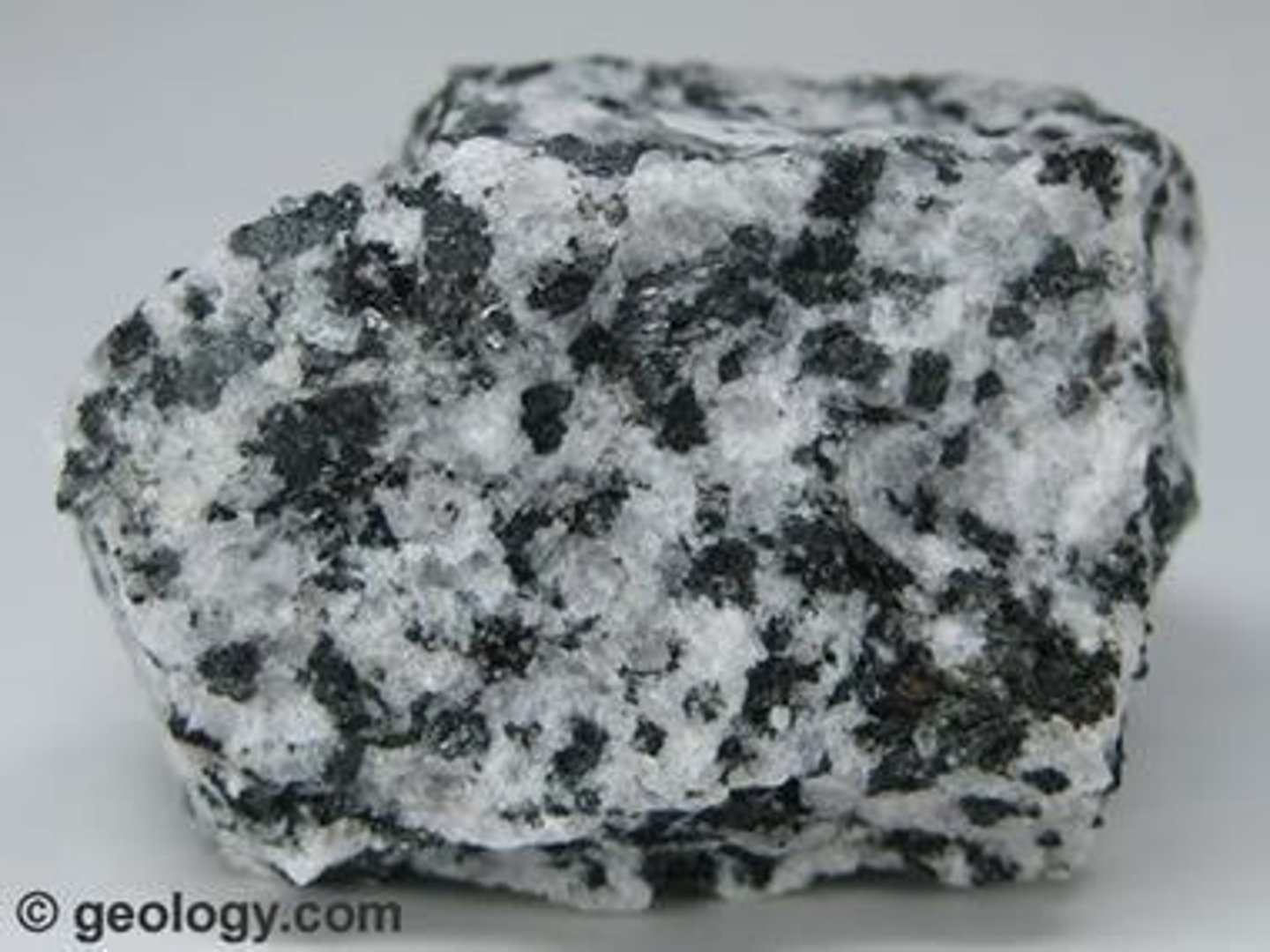
Rhyolite
extrusive igneous rock with a very high silica content. It is usually pink or gray in color with grains so small that they are difficult to observe without a hand lens. Rhyolite is made up of quartz, plagioclase, and sanidine, with minor amounts of hornblende and biotite
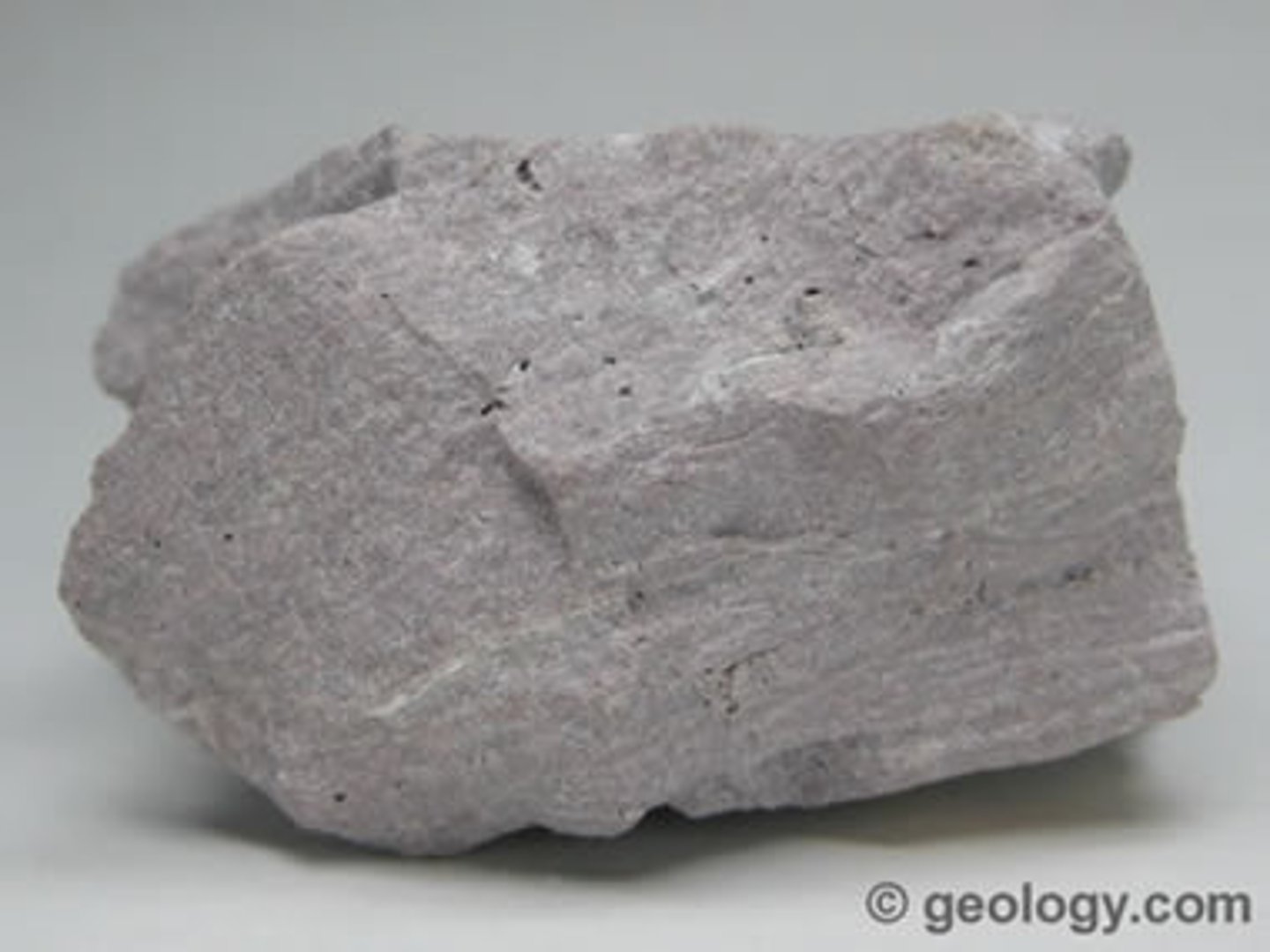
Scoria
Dark-colored igneous rock with abundant round bubble-like cavities known as vesicles. It ranges in color from black or dark gray to deep reddish brown. Scoria usually has a composition similar to basalt, but it can also have a composition similar to andesite
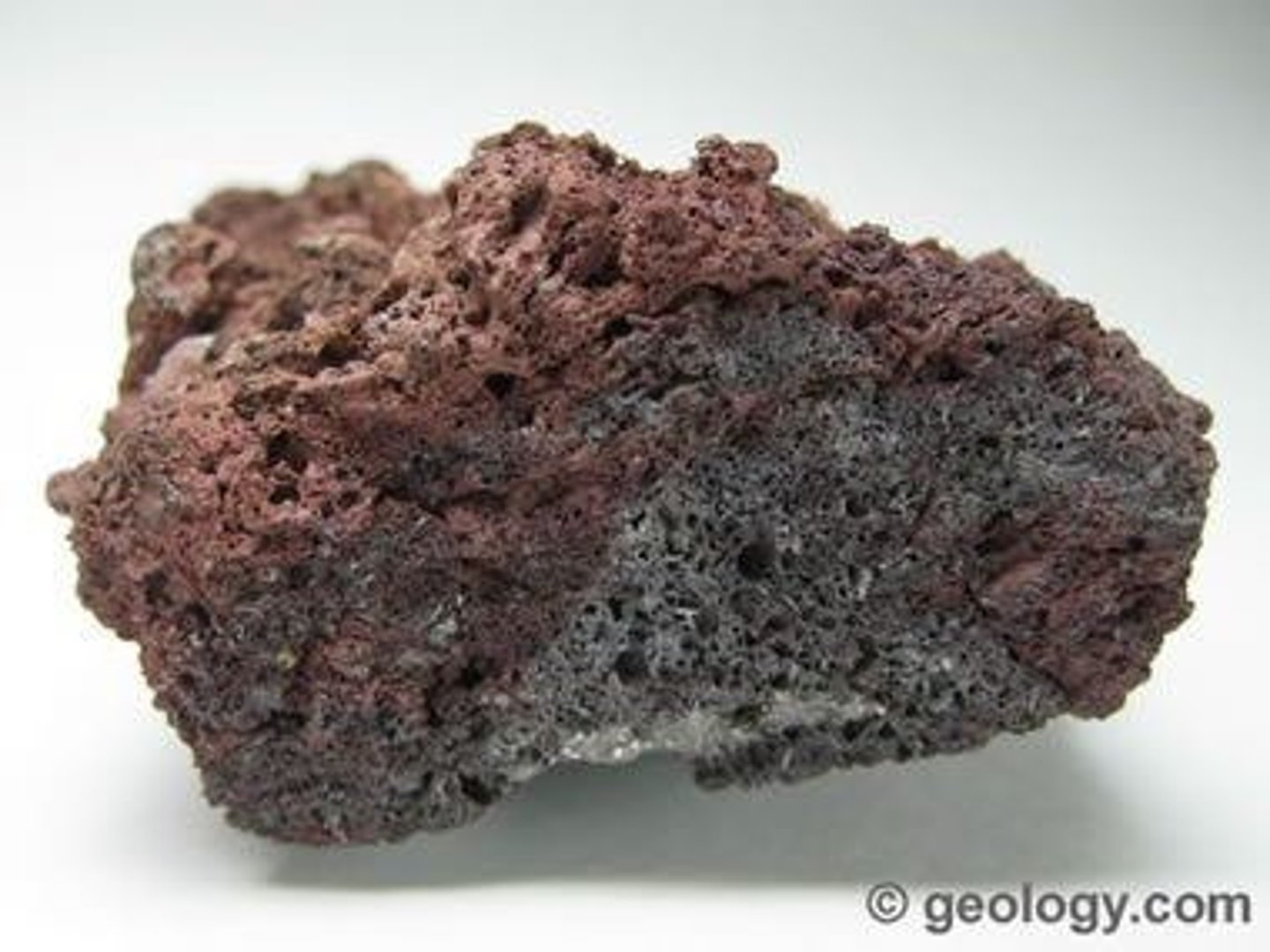
Welded Tuff
igneous rock that forms from the products of an explosive volcanic eruption. In these eruptions, the volcano blasts rock, ash, magma and other materials from its vent. This ejecta travels through the air and falls back to Earth in the area surrounding the volcano. If the ejected material is compacted and cemented into a rock, that rock will be called "tuff."
